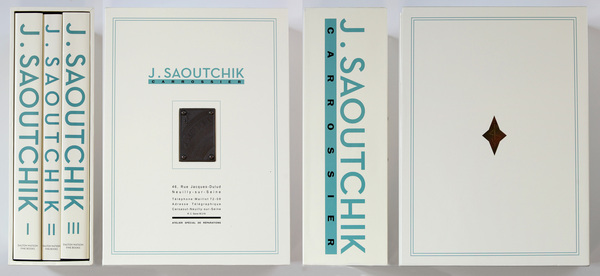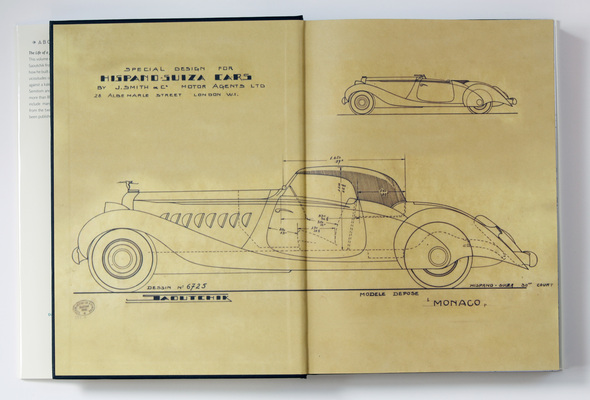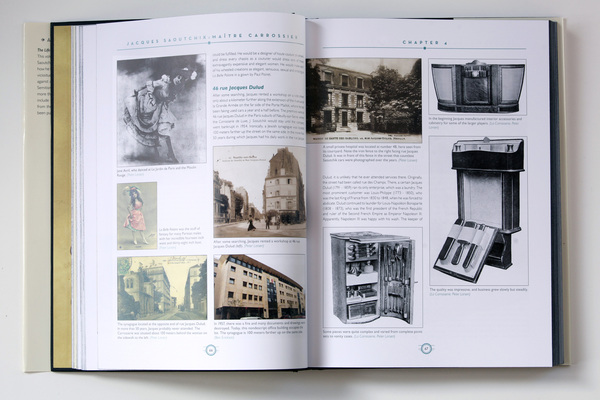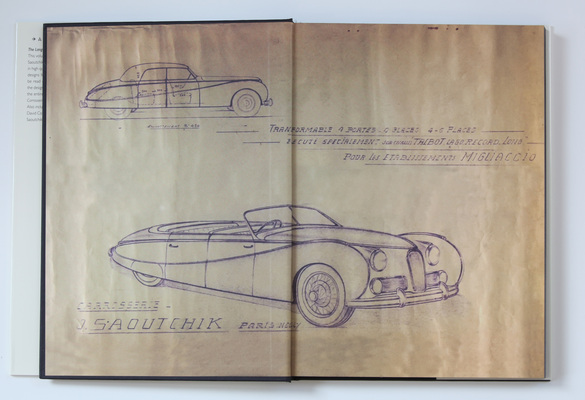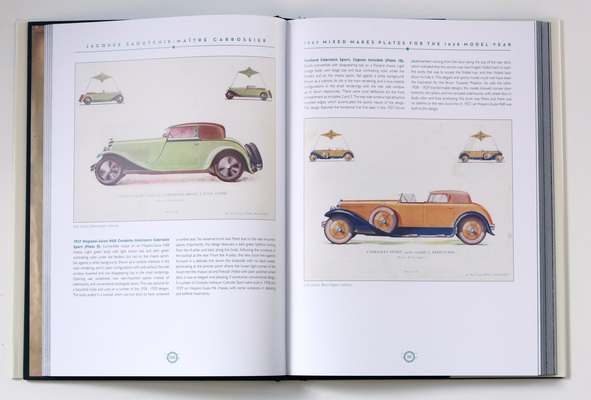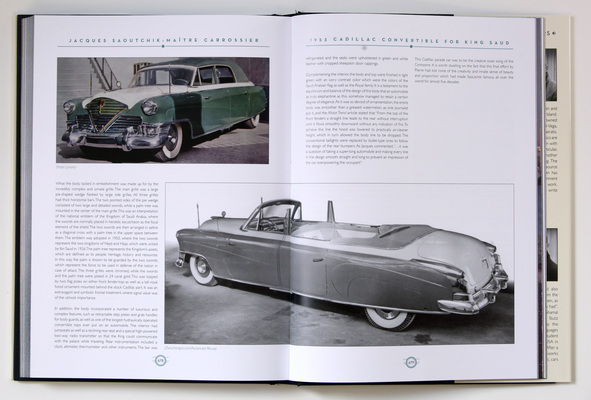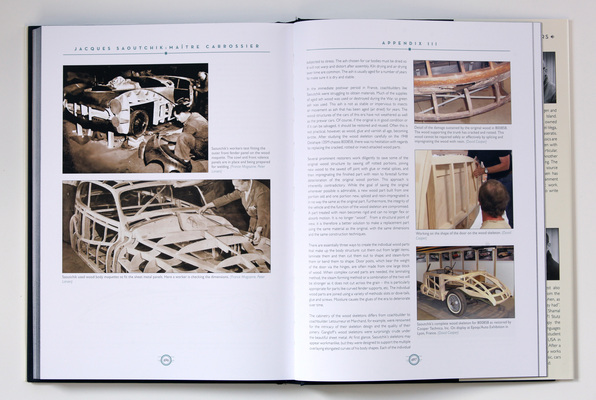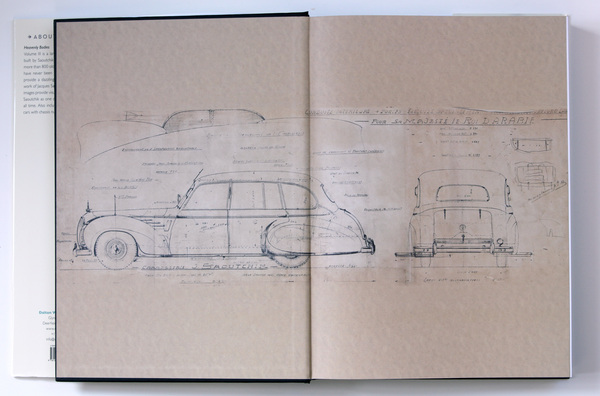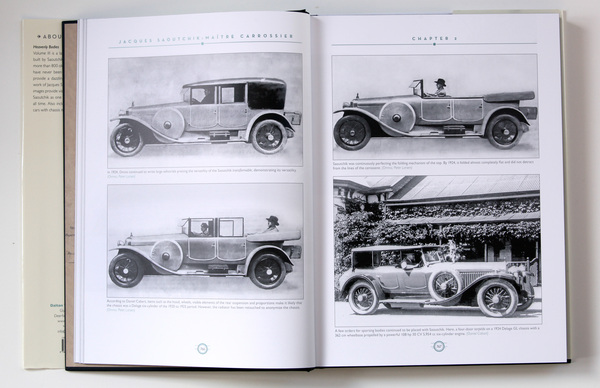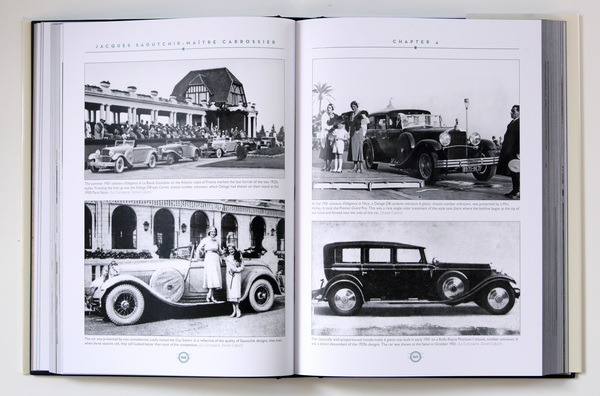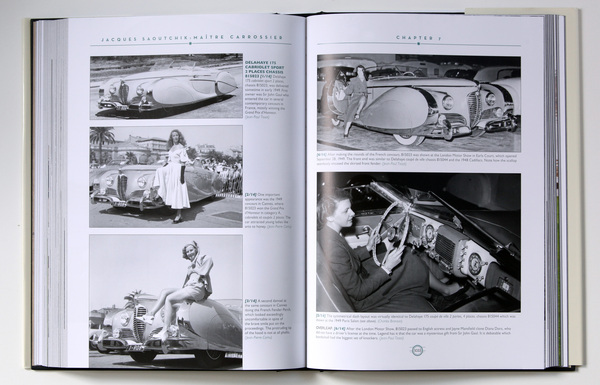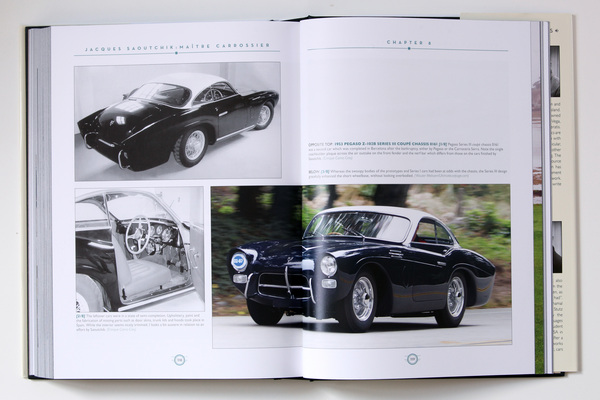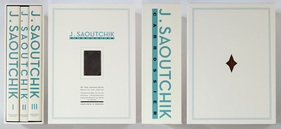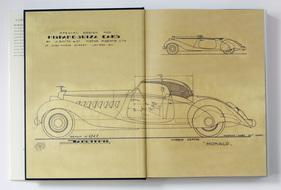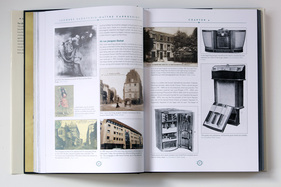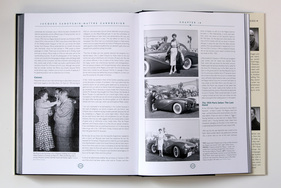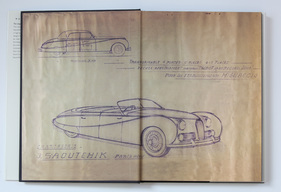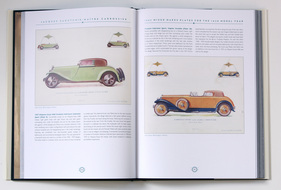7 kg, 1164 pages, almost 2000 pictures and around 800 cars. Only rarely is a man's life's work documented in such detail as Peter Larsen and Ben Erickson have done in their latest work "Jacques Saoutchik, Maître Carossier".
How do you tackle such a task? It's easy to imagine that Larsen and Erickson had a long discussion before they decided to divide their findings and the collected photos into three connected books.

The first book describes Saoutchik's life, the second discusses his designs and the third could be described as a catalog raisonné.
The not-so-easy life of Jacques Saoutchik
Larsen could have made it easy for himself, as he writes: "Once upon a time there was a Russian carpenter who moved to Paris. He spent 50 years there and built fascinating cars. He went bankrupt and died."
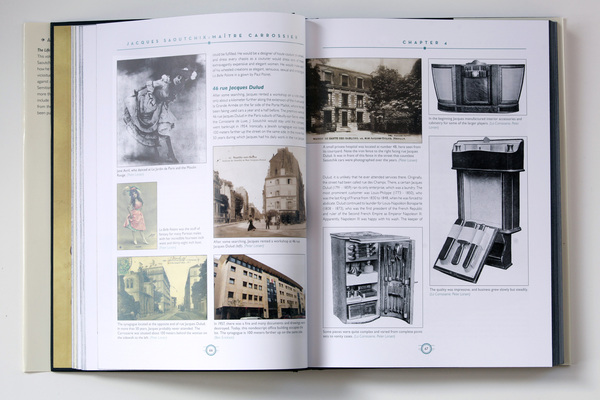
Although this is an accurate reflection of the facts, it would be difficult to understand Saoutchik without going into more detail. And Larsen does this in no less than 430 pages. It is only logical that he also describes the environment, e.g. the Paris-Madrid race of 1903, and creates the context for a better understanding.
Saoutchik was born Iakov Savtchuk in Russia. He was Jewish. Anti-Semitic prejudice forced him to leave Russia with his brother Boris, leaving his family and possessions behind. He arrived in Paris in 1899, soon changed his name to a French pronounceable version and soon began to coach horse-drawn carriages. Saoutchik then worked for Renault, but left this company after the death of his boss Marcel Renault in the Paris-Madrid race in 1903.
The shocked Jacques became self-employed again and founded his own coachbuilding company, which was called "Carosserie de Luxe, J. Saoutchik" in 1906. And the world soon learned of his skills, as he had a stand at the Paris Motor Show most years until 1954, when he went bankrupt, and he also exhibited repeatedly at the Geneva Motor Show.
The Saoutchik designs
The second book, entitled "The Language of Design", presents Saoutchik's design language on around 230 pages, using drawings, sketches and photographs, but of course above all brochures and advertising illustrations.

Around 46 years of shapes and design details are discussed and extensively illustrated here.
Of course, his patented removable windshield for passengers is discussed, as well as his convertible bodies, in which the opening roofs disappeared completely into the bodywork, and an entire chapter is dedicated to the exotic Bucciali brand.

And there is also mention of the era of opulent and extravagant show cars, which stood out with their expansive dimensions and immodest chrome ornamentation. At that time, Pierre Saoutchik, Jacques' son, also contributed a great deal to the design of the cars.
The Pegaso collaboration and the resulting sports cars are also described in detail.
The chapter on coachbuilding and the restoration of a Delahaye 135M, which was contributed by David Cooper, is also well worth reading.
The Saoutchik vehicles
Finally, in the third volume, Peter Larsen and Ben Erickson compiled a list of works. Unfortunately, the order books and records of "Carrosserie Saoutchik" were lost in a fire, so it is not easy to find out which and how many vehicles Saoutchik built.

It is estimated that he produced around 20 to 25 bodies per year with a double-digit number of employees. In total, there may have been 800 of them (Zwischengas estimate), around a quarter of which, built on chassis from Mercedes-Benz, Delahaye, Delage, Salmson, Pic-Pic, Rolls-Royce and many other manufacturers, are reproduced in the factory directory in pictures and text on around 350 pages and also included in a table listing the cars with known chassis numbers.
The fact that some of the pictures from the other books appear again in the third book is intentional and is intended to ensure that the individual vehicles are documented as completely as possible.

The third book is rounded off with an extensive index, which makes it much easier to "navigate" through the three books.
Not an easy read
The three-volume work on Saoutchik is not an easy read, and not just because of its weight. The work is only of limited use as a coffee-table book; it needs to be read, studied and awaits engagement with the "Constant Reader".
Of course, the many archive images are a delight, even if you are not primarily interested in Saoutchik's creations. And many of the events surrounding the exiled Russian's life are also of interest to readers not primarily interested in special car bodies.
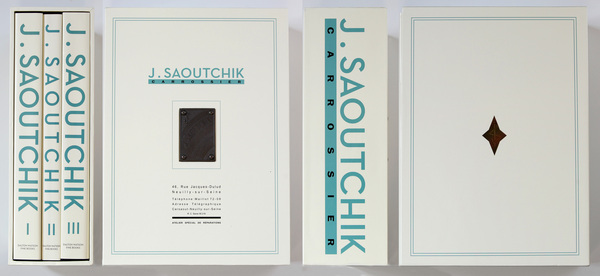
In its cheaper version, however, the three-volume set supplied in a slipcase still costs USD 500 and for customers outside the UK and USA there is a postage surcharge of USD 30. A little enthusiasm is therefore required.
A must for lovers of French coachbuilding
However, for people who are interested in French coachbuilding and who admire or even own Delahaye, Delage or Pegaso vehicles, this three-volume set by the author couple Larsen/Erickson, who have already produced a convincing first work in the form of " Talbot Lago - The Car from Paris " , is a must.
The quality is consistent and the material presented is very extensive. Again and again you will discover something new and can hardly get enough of the details of the car bodies.
Perhaps a few additional tables could have provided a better overview and surviving vehicles could have been documented even more extensively, but this is criticism on a very high level, because we are actually very happy with the three books.
Bibliographical details
- Title: Jacques Saoutchik, Maître Carossier
- Authors: Peter M. Larsen and Ben Erickson
- Language: English
- Publisher: Dalton Watson, 1st edition 2014
- Size: 1164 pages, 1933 images, format 33.5 x 23 cm, approx. 6.9 kg (3 volumes and slipcase)
- ISBN: 928-1-85443-269-8 (Deluxe leather edition: 978-1-85443-270-4)
- Price: USD 500
- To order: From the publisher Dalton Watson


